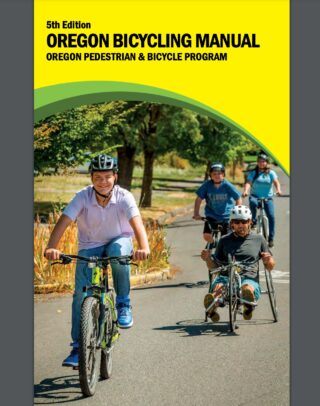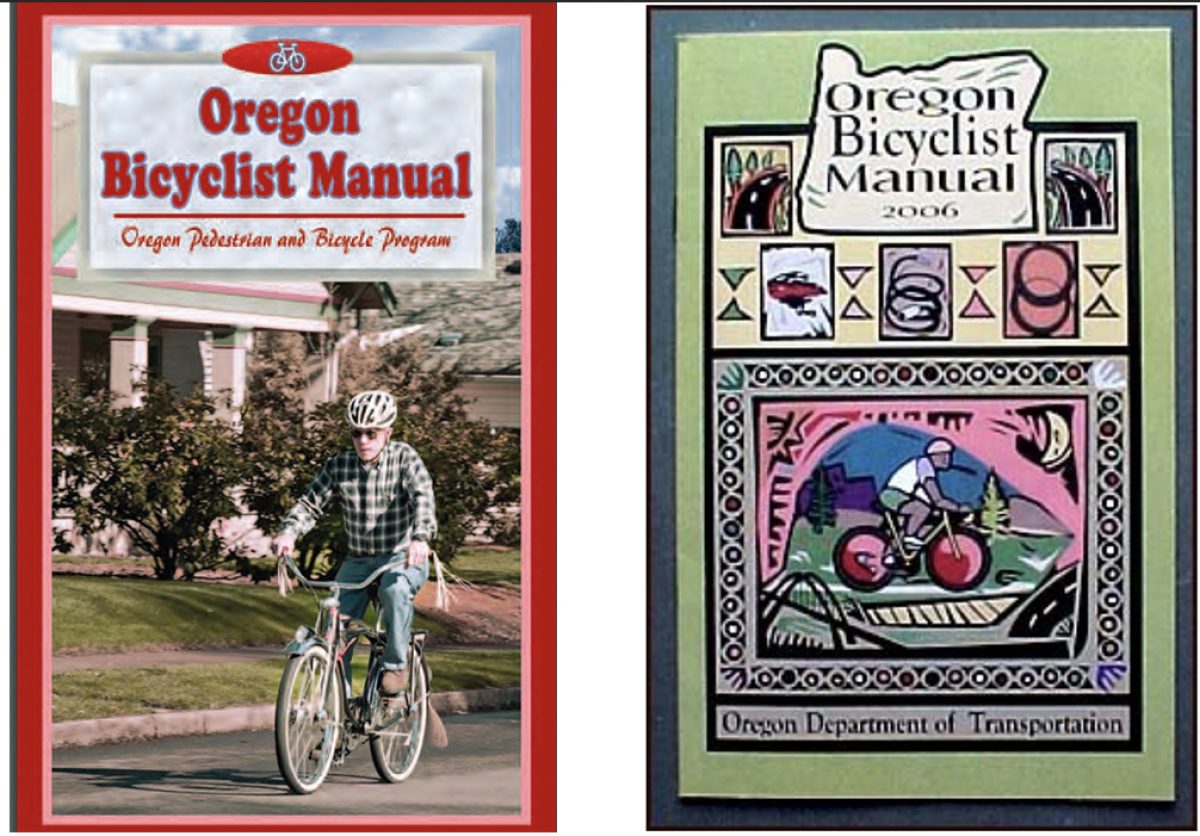
Here’s some good news on a little thing we care a lot about: The power of words.
For many years here on BikePortland we’ve practiced what we preach about not using mode labels. That is, we don’t use “cyclist,” “motorist” and so on* because they put labels first instead of people. (*I’ve very recently started using “pedestrian” again in certain contexts — the idea is to be sensitive about word choice, not adhere to rigid rules.)
I’m very happy to see that the Oregon Department of Transportation has seen the light. Their brand new Oregon Bicycling Manual — a 40-page booklet offered online and at DMVs and educational events statewide — has all but ditched these harmful and inaccurate labels in favor of more descriptive and productive ones.
The title itself is new: It’s now a “bicycling” manual, not a “bicyclist” manual. This small change turns the focus toward the activity instead of a personality type. Bicycling and the people who do it already suffer enough from false narratives and irrational anger from many people. The more we can remind folks that bicycle users are people and not “those cyclists”, the better.
Advertisement
The idea of using “people-first” language is something that first gained prominence in the disability rights world and has caught on in bicycling and other transportation advocacy spheres in recent years. Wikipedia describes it as language that, “puts a person before a diagnosis, describing what a person ‘has’ rather than asserting what a person ‘is’… Person-first language can also be more generally applied to any group that would otherwise be defined or mentally categorized by a condition or trait.”
Or in the wise words of Seattle Bike Blog founder Tom Fucoloro, who declared in a 2015 post “I’m not a cyclist”:
“By conflating a person’s chosen transportation mode at a particular moment with their personal identity, it becomes shockingly easy think about people as members of warring tribes in conflict, battling for space (cue car horn honking and “cyclist” flipping the bird). The idea of a “war on cars” suddenly makes sense to a lot of people because they see their car lanes being turned into bike lanes for others. The safety and comfort of real living and breathing and loving people getting around on foot and bike has been dropped from the conversation.
But if you think of everyone on the street as a person, discussions go in a very different direction. Because we all want our friends, neighbors, co-workers and family members to get around town safely whether they choose to drive, bike or walk. I don’t love my mom any less when she’s driving than when she’s walking.”
On that note, ODOT carries the people-first language through the manual by using “people bicycling” and “people who are driving cars” instead of “bicyclists” and “motorists”.
By contrast, the word “people” was used just once in the 2010 edition of this manual. It appears 71 times in the new edition. The word “bicyclist” appears just six times in the new manual, compared to 36 times in the old one.
It’s also worth noting the huge upgrade in cover photo from previous versions!
This is a small but important shift. Thanks ODOT!
– Check out the new manual here (PDF)
— Jonathan Maus: (503) 706-8804, @jonathan_maus on Twitter and jonathan@bikeportland.org
— Get our headlines delivered to your inbox.
— Support this independent community media outlet with a one-time contribution or monthly subscription.


